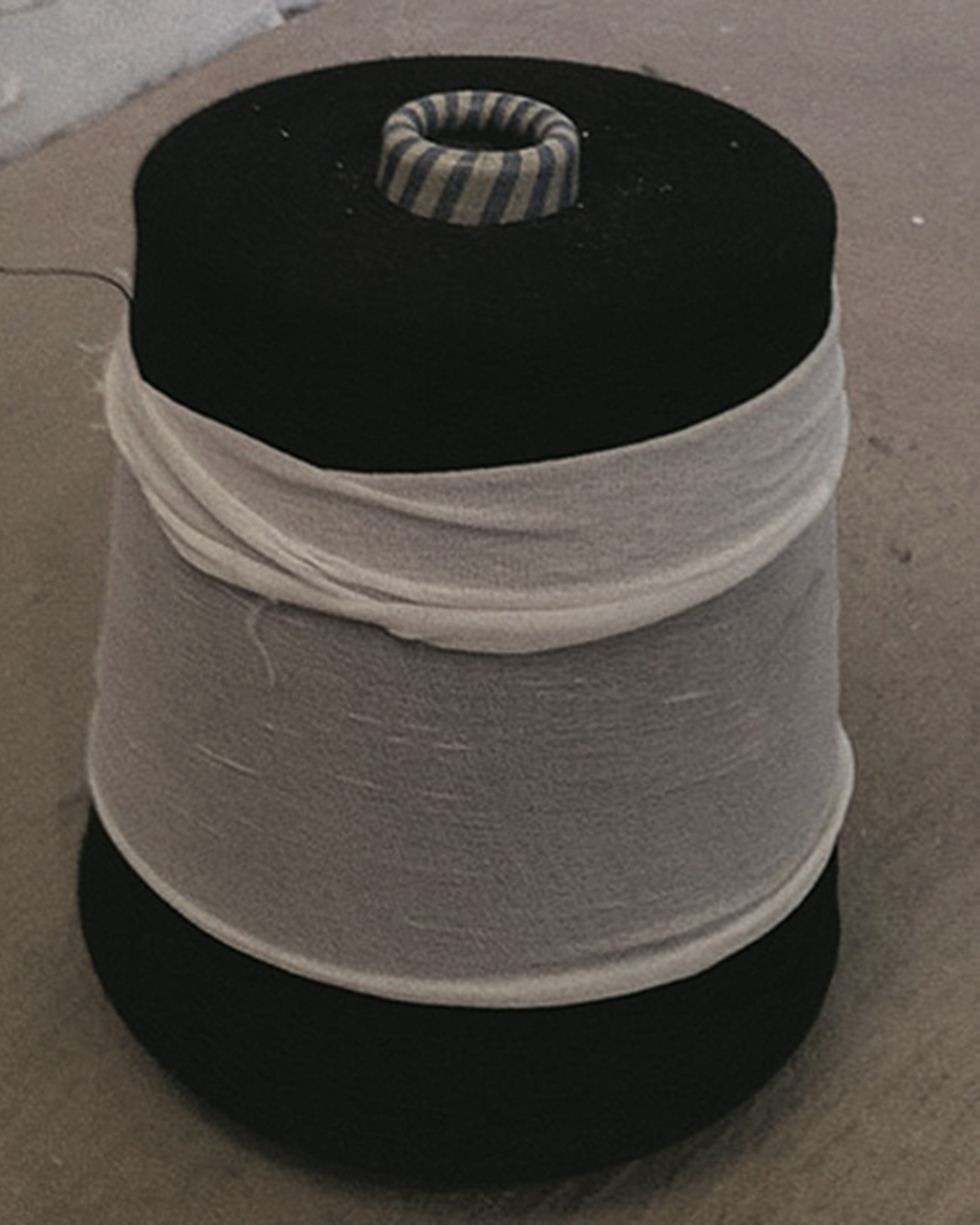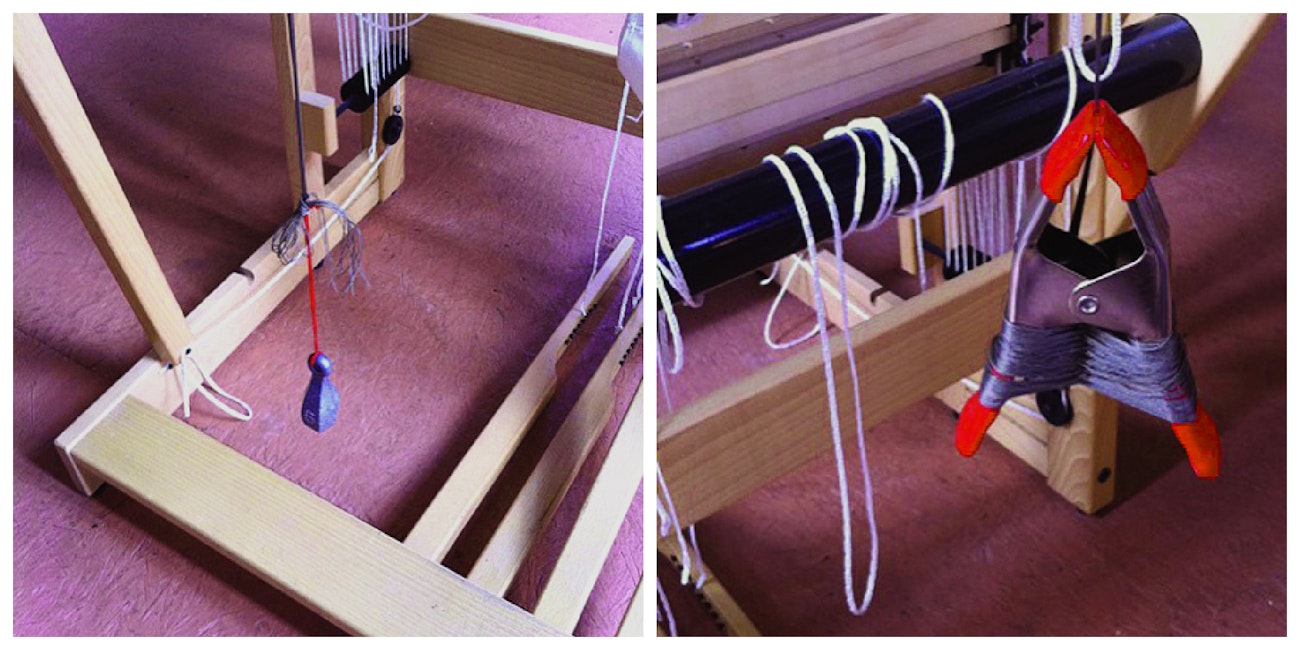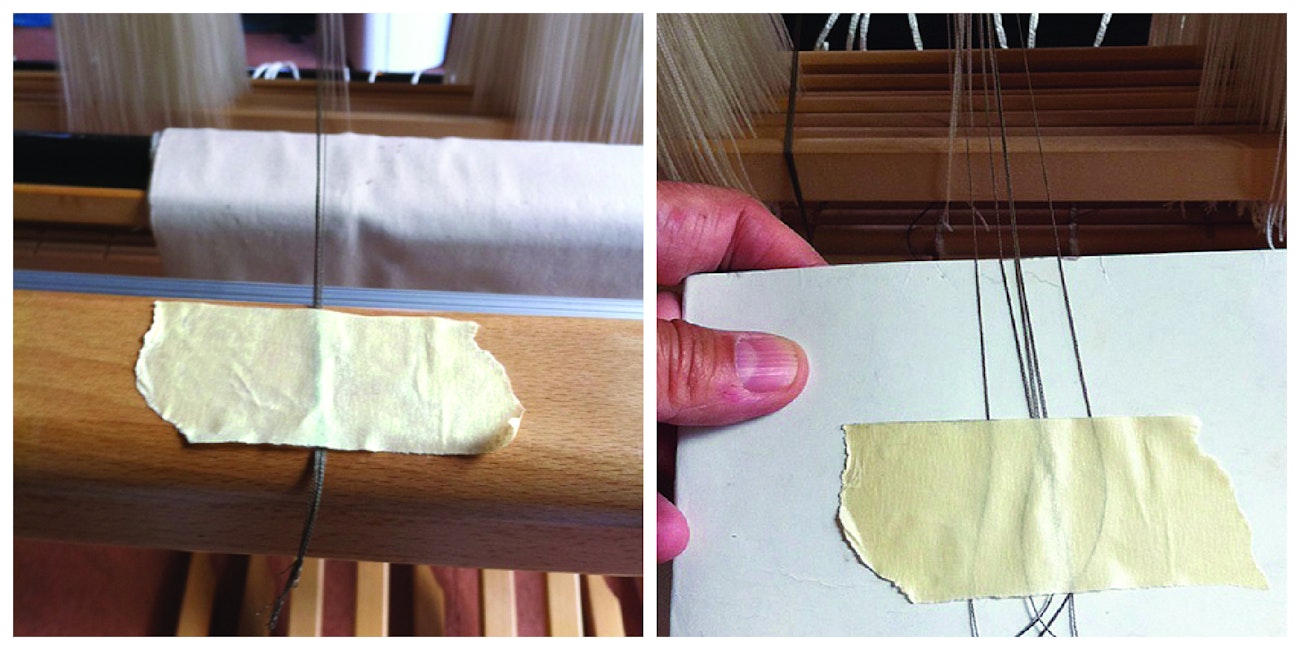Here Giovanna Imperia describes what makes a yarn elastic, and how to control that elasticity through winding, warping, threading, weaving, and finishing. This article originally appeared in Handwoven September/October, 2010. You can also download a PDF of the article using the button below. ~Susan
Active yarns can cause a woven cloth to be transformed completely during wet-finishing, forming pleats, bumps, furrows, and other wavy and unusual textures. Active yarns include fullable wools,highly twisted (crepe) yarns, some metallics, and elastic yarns—perhaps the most “active” of all.
What is an elastic yarn?
Elastic yarns can be composed of wool, silk, viscose, cotton, nylon, polyester, or even metallics plied with an elastic material made of polyurethane (Lycra, Spandex, Elite). Today’s elastic yarns retain their elastic properties for a very long time with normal care. Three factors determine their elasticity: how much polyurethane they contain, how the polyurethane and the fiber are plied together, and the size of the fiber relative to the elastic. Polyurethane yarn is quite thin. Combined with a much thicker fiber, it will not contract as much as if it is plied with a fine one. Unbalanced plies, in which the fiber and the polyurethane tend to separate, are the most elastic.
 Using a stocking or knitted sock around your elastic yarn cone will help keep it from unwinding when you least expect it! All photos by Giovanni Imperia except when otherwise noted.
Using a stocking or knitted sock around your elastic yarn cone will help keep it from unwinding when you least expect it! All photos by Giovanni Imperia except when otherwise noted.
Winding from cones
To wind bobbins, make sure that: 1) the yarn coming from the cone is under tension, and 2) the yarn is wound on the bobbin with tight and very even tension. Use a stocking (or knitted sock) around the cone when unwinding from it. As you wind the bobbin, maintain steady pressure on the yarn and keep the bobbin winder rotating at a consistent speed. An electric winder allows better control than a manual one.
Warping
When you are using elastic yarns in the warp, do not beam them with the rest of the warp but suspend them from the back beam with weights. Elastic yarns must be kept under tension at all times. Attach weights or cover with a heavy book as you pull elastic threads through reed and heddles. When the rest of the warp is beamed, weight the elastic thread or threads at the back.
 Rather than beaming elastic yarns with the other yarns in your warp, instead weight them over the back beam as you wind and as you weave. Keep them under tension, always!
Rather than beaming elastic yarns with the other yarns in your warp, instead weight them over the back beam as you wind and as you weave. Keep them under tension, always!
Threading
Thread a few ends at a time, never removing tension from the ones you aren’t handling. Tape the ends to the cloth beam or use a small piece of cardboard and tape the ends to it.
 You can tape the elastic yarns directly to your cloth beam or a piece of cardboard when you aren't working with them during sleying and threading.
You can tape the elastic yarns directly to your cloth beam or a piece of cardboard when you aren't working with them during sleying and threading.
Weaving
To weave with an elastic yarn, place the yarn flat against the fell and control the spinning bobbin with your finger. Elastic yarns cause extreme draw-in, so it’s best to use a temple. Choose one with very fine teeth so as not to tear the fabric’s edge.
Finishing
Cloth woven with active yarns should be finished in warm to hot water—lots of water. Stop the machine after it is full to allow the fabric to soak, making sure that the active yarns have time to shrink completely. Silk crepe will need extra time in the water to contract, while very active elastic yarns will contract a lot more quickly. Sometimes, if you live in a humid climate, elastic yarns will start moving immediately after the cloth is removed from the loom. For further shrinkage, you can place the washed cloth in a steam dryer and dry the fabric on a warm setting.

